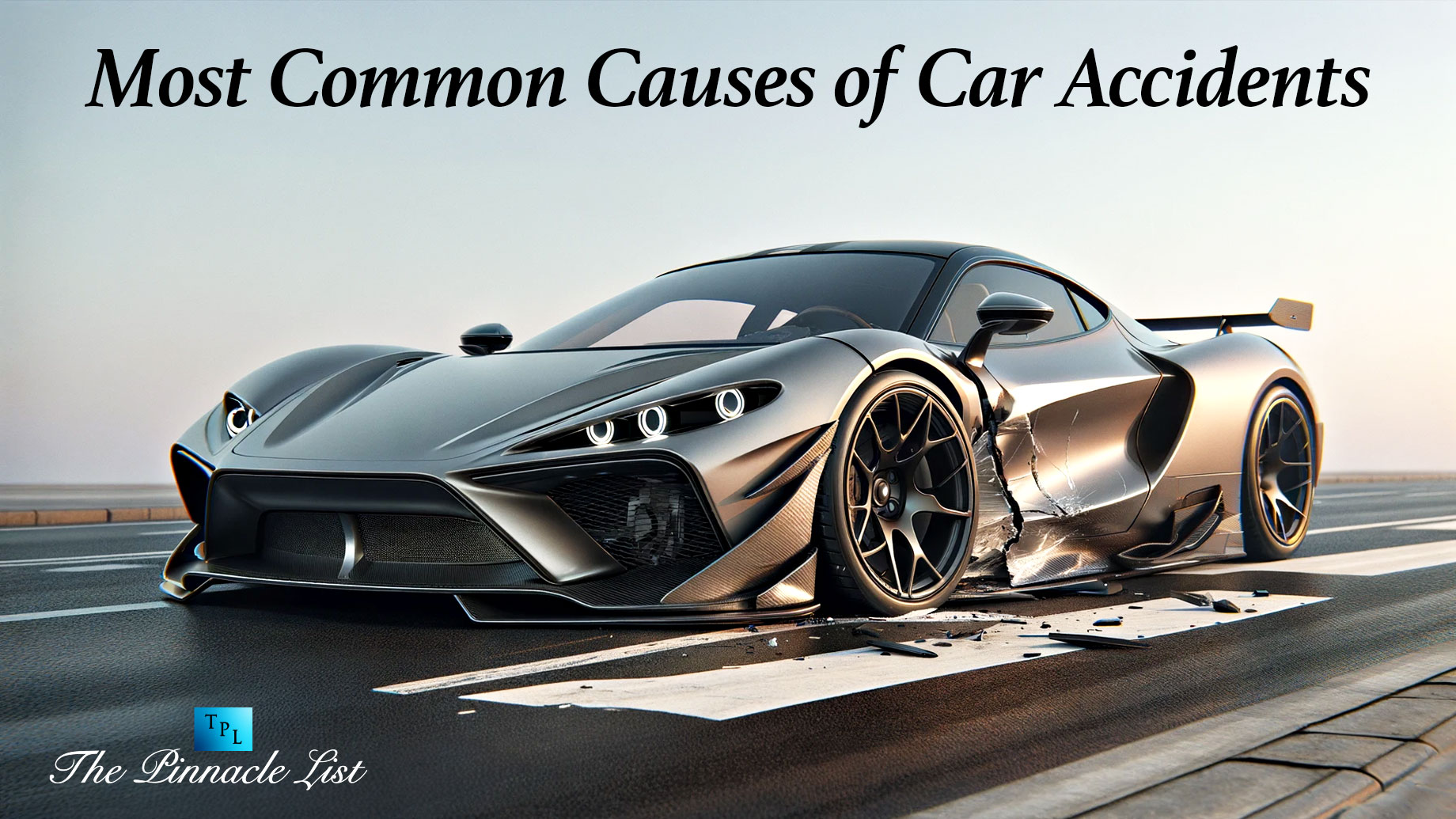
Getting behind the wheel of a car comes with immense responsibility. As drivers, we have a duty to operate our vehicles in a safe and lawful manner to protect ourselves, our passengers, and everyone else sharing the roads.
However, despite laws, public awareness campaigns, and advanced safety features in modern automobiles, car accidents remain an unfortunately common occurrence on today’s roadways. In fact, according to the National Highway Traffic Safety Administration (NHTSA), an average of over 35,000 people are killed in motor vehicle crashes every year. The car accident damage can range from minor dings and scratches to total vehicle loss, not to mention the potential for serious personal injuries or fatalities. It’s always a good idea to contact a car accident injury lawyer if you are in need of legal help after a car accident.
Understanding the most prevalent causes of these deadly collisions can help equip us with the knowledge needed to prevent them. After thoroughly analyzing decades’ worth of crash data, researchers have identified the three leading contributors to fatal car wrecks: drunk driving, speeding, and distracted driving.
Impaired Driving
The consequences of drunk driving are enormous and undeniable. Alcohol severely inhibits functioning, coordination, and reaction times – critical faculties needed to operate a vehicle safely. Data analysis shows about one-third of all deaths stemming from U.S. crashes involved an alcohol-impaired driver. In specific figures, drunk drivers accounted for a startling 13,695 fatalities in 2020 alone.
Despite the risks, over 10,000 people die every year due to alcohol-involved collisions. Tragically, two out of three of these fatalities represent individuals other than the intoxicated drivers themselves. These can include passengers, people in other vehicles, pedestrians, and cyclists. Clearly, choosing to drive while under the influence puts countless lives in danger.
Speeding
Many car accident lawyers believe that speeding is as dangerous as driving drunk. While drinking impairs the capability to drive, speeding impacts the time needed to react and stop. At faster speeds, drivers are given less time to spot and respond to hazards and have longer stopping distances. For example, a car traveling at 40 mph requires over 180 feet to come to a complete stop – enough distance to cover over half a football field. As speed climbs even higher, braking distances are dramatically amplified.
Considering these facts, it follows that almost a third of all crash deaths stem from speeding. Federal reporting tracked 11,258 lives lost in 2020 due to motorists who drove over posted speed limits or too fast for conditions. Unlike drunk driving, most speed-related deaths involve the speeding driver themselves. Still, innocent passengers and other road users are also maimed and killed by reckless speed choices every day in America.
Distracted Driving
Driver distraction now joins drunk driving and speeding as a top cause of accidents, injuries, and fatalities. Distracted driving includes any activity diverting a motorist’s attention away from operating their vehicle. While electronics like cell phones take most of the blame today, drivers have engaged in distracting behaviors since the advent of cars – talking, eating, adjusting music, and disciplining kids.
However, modern advancements enabling constant connectivity through devices mean more significant and dangerous distraction threats. Texting and driving now constitutes one of the worst forms, exponentially amplifying crash risks by necessitating visual, manual, and cognitive distractions simultaneously. Though banned in most states, an estimated half a million drivers continue using electronic devices while operating vehicles daily. Tragically, this choice destroys thousands of lives yearly.
The sobering statistics reveal the vast human loss stemming from preventable driving behaviors. As drivers, we must commit to operating vehicles vigilantly, soberly, and within reasonable speed limits. Furthermore, we should pledge to model safe habits for passengers, call out dangerous actions in others, support impactful legislation, and always speak up when witnessing impaired or reckless driving. Through conscientiousness, education, and caring for others, we can work together to save lives on the road.